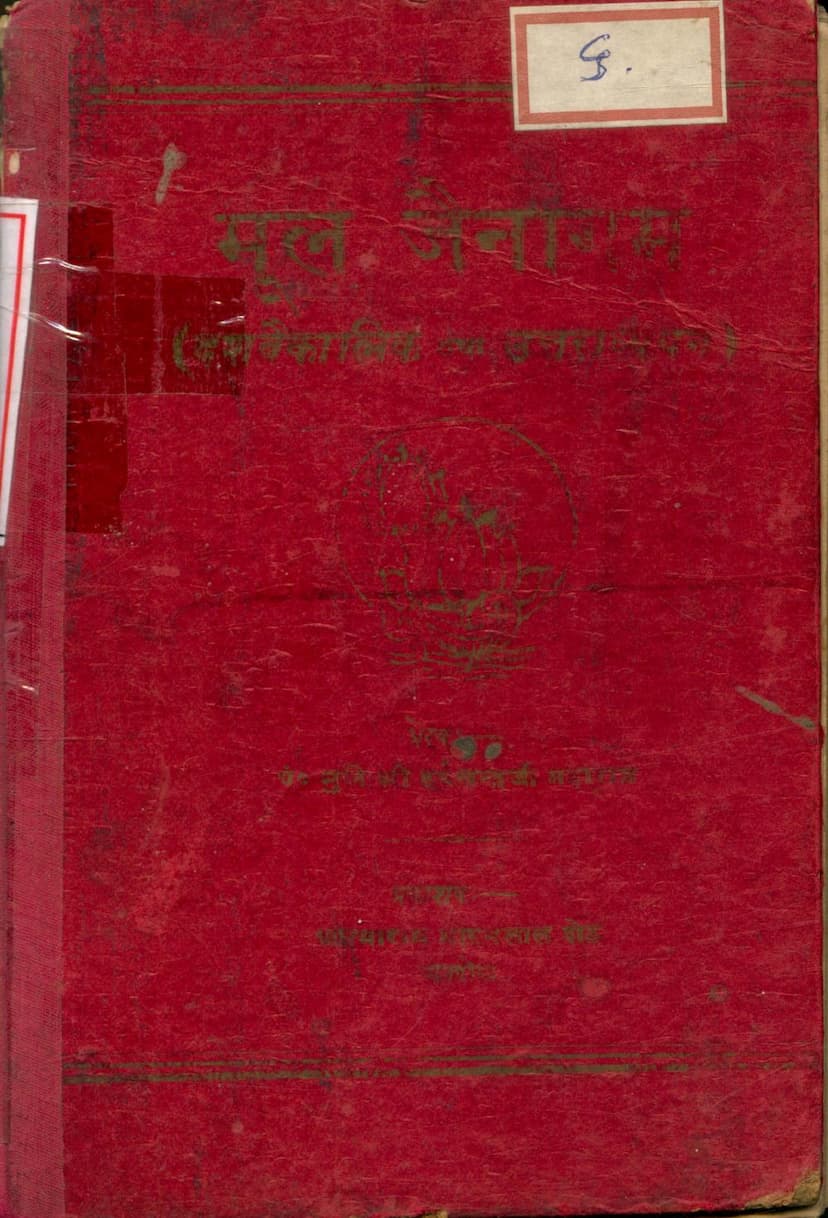Dashvaikalik Tatha Uttaradhyayan
Added to library: September 1, 2025

Summary
This Jain text, "Dashvaikalik Tatha Uttaradhyayan" authored by Harshchandra Maharaj and published by Atmaram Mohanlal Sheth, is a compilation of two fundamental Jain scriptures: the Dashvaikalik Sutra and the Uttaradhyayan Sutra. The book was first published in 2005 Vikram Samvat (1649 CE), coinciding with 2375 Veer Samvat.
The text is dedicated to the publisher's late mother, Brajkore Bai, acknowledging her inspirational life of devotion, moral values, and reinforcing the family's faith in Jainism.
The Dashvaikalik Sutra, as presented in this compilation, focuses on the conduct and principles of ascetics (monks). It is divided into six chapters, covering various aspects of their rigorous life:
- Duma Pushpika: Discusses the virtuous nature of monks resembling flowers.
- Shamanya Purvaka: Elucidates the qualifications and behavior of monks.
- Kshullaka Acharya Katha: Details the behavior and practices of ascetic monks, emphasizing non-violence, self-control, and adherence to vows.
- Chha Jivanikaya: Explains the six categories of living beings (earth, water, fire, air, plants, and mobile beings) and the imperative to avoid harming them. This chapter elaborates on the Mahavratas (great vows) such as non-violence, truthfulness, non-stealing, celibacy, and non-possession, stressing the importance of avoiding harm through thought, word, and deed.
- Pindeshana (two parts): This lengthy section meticulously outlines the rules and etiquette for monks in collecting and consuming food (alms). It covers what is permissible and what is forbidden, emphasizing mindful consumption and the avoidance of actions that could lead to harm or spiritual degradation.
- Mahallika Acharya Katha (Dharma, Artha, Kama): Focuses on the principles of Dharma, Artha (wealth), and Kama (desire) from an ascetic perspective, guiding monks on how to navigate these aspects of life while maintaining their spiritual path.
The Uttaradhyayan Sutra, also included in this volume, is another crucial Jain scripture. The provided text includes excerpts from it, covering several chapters:
- Vinaya Sutra (Chapter 1): Emphasizes the importance of humility, respect, and obedience towards gurus and the teachings.
- Parishaha Sutra (Chapter 2): Details the twenty-two types of hardships or adversities that ascetics may face and the spiritual fortitude required to overcome them.
- Chatvari Paramangaani (Chapter 3): Highlights the four essential elements for spiritual progress: Vinaya (discipline), Sukha (knowledge), Tapa (austerity), and Acharya (conduct).
- Pashanasamaniyaya (Chapter 4): Focuses on the consequences of attachment and worldly desires, contrasting the outcomes of righteous and unrighteous actions.
- Akama Maraniya (Chapter 5): Discusses the nature of involuntary death and contrasts it with voluntary spiritual realization through ascetic practices.
- Kshullaka Agnihitra (Chapter 6): Deals with the conduct of novice ascetics, emphasizing the avoidance of worldly entanglements.
- Elaka Sutra (Chapter 7): Provides guidance on detachment from worldly pleasures and the importance of renunciation.
- Kapili Sutra (Chapter 8): Explores the concept of karma and its consequences, advising on how to mitigate negative karma.
- Nami Rajaputra Sutra (Chapter 9): Narrates the story of King Nami, who renounced his kingdom and worldly possessions to embrace asceticism, highlighting the path to liberation.
- Drumapatra Sutra (Chapter 10): Uses the metaphor of a falling leaf to illustrate the impermanence of life and the importance of vigilance in spiritual practice.
- Bahushruta Sutra (Chapter 11): Celebrates the importance of accumulated knowledge and wisdom in the spiritual journey.
- Haritshikya Sutra (Chapter 12): Focuses on the purity of conduct and the overcoming of temptations.
- Chitta Sambhuta Sutra (Chapter 13): Presents a dialogue between King Vatsabhumi (Chittabhuta) and an ascetic, discussing karma and liberation.
- Ushuyarya Sutra (Chapter 14): Explains the celestial beings (Devas) and their lifespans, emphasizing the impermanence of even heavenly existence.
- Sabhmikshu Sutra (Chapter 15): Describes the ideal conduct of a monk.
- Brahmacharya Sutra (Chapter 16): Delves into the principles of celibacy and its importance in spiritual discipline.
- Pashana Samaniyaya (Chapter 17): Discusses the consequences of attachment and the virtues of detachment.
- Samyata Sutra (Chapter 18): Emphasizes self-control and adherence to rules.
- Jiva Ajiva Vibhakti (Chapter 36): Explains the distinction between soul (Jiva) and non-soul (Ajiva), the fundamental categories in Jain philosophy.
- Leshya Sutra (Chapter 34): Describes the six types of karmic dispositions (Leshya) and their impact on one's spiritual state.
- Karma Prakruti (Chapter 33): Details the various types of karma and their durations.
- Tapa Sutra (Chapter 30): Elucidates the significance of austerities (Tapas) in spiritual purification.
- Charana Vidhi (Chapter 31): Outlines the prescribed conduct and practices for ascetics.
- Pramada Harana (Chapter 32): Discusses the means to overcome negligence and attachment.
The text provides a detailed and systematic exposition of Jain asceticism, covering ethical conduct, philosophical principles, and the spiritual path to liberation. The meticulous descriptions, particularly in the Pindeshana section, highlight the emphasis on mindfulness and non-violence in every aspect of an ascetic's life.